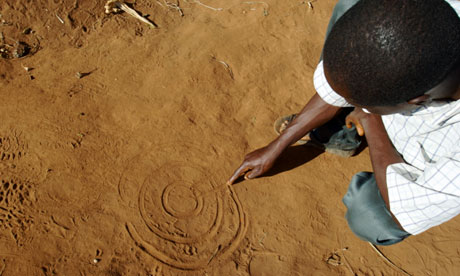
Small-scale farmers produce food for 70% of the global population. Yet, they are some of the world's poorest and most food insecure people. Alternatives to conventional farming should be embraced to improve subsistence farmers' yields and to ensure adequate food production for the growing global population. The stark reality, according to the International Food Policy Research Institute, is that the world needs toproduce more food with fewer resources.
Agroecology, a farming approach that mimics natural ecosystems, is an alternative method that can produce more food using fewer resources. Small-scale farmers in Africa have used agroecology to more than double crop yields within 3 to 10 years of implementation, according to the UN special rapporteur on the right to food. Farmers also use agroecology to improve soil fertility, adapt to climate change, and reduce farming input costs.
In contrast, conventional farming is characterised by monocropping, green revolution technologies, and synthetic fertiliser. It is resource intensive in terms of capital, land, water, and fossil fuel use. Conventional farming threatens future food production by reducing biodiversity, and contributing to environmental degradation and climate change which lower yields.
Permaculture, a contraction of permanent agriculture, is a promising design system for the application of agroecology. It was developed in Australia in the 1970s based on agroecology and indigenous farming systems. In practice, permaculture farms are organic, low-input, and biodiverse, and use techniques like intercropping trees, planting perennials, water harvesting, and resource recycling.
There are numerous permaculture projects globally. However, they are largely disparate, small-scale projects. While experts have endorsed agroecology's ability to address food and farming problems, permaculture is not widely known, and has failed to draw broader funding and policy support.
Permaculture programmes are more multifunctional than typical agricultural development programs. This is important given the growing call for "triple-win solutions" for agriculture, health, and environmental sustainability. For example, Partners in Health ran a model permaculture farmer programme in Malawi which helped HIV/Aids patients get theadditional caloric and micronutrient intake that they need. Elsewhere, in Malawi and South Africa, permaculture is used "as a sustainable, non-donor dependent tool for improving the health, food and nutrition security, and livelihoods," of orphans and vulnerable children, according to a recent USAid report. Indonesia, Oxfam funded a permaculture school that taught ex-combatants and tsunami survivors how to improve their food security and livelihoods, while protecting the environment.
As a recent article highlighted, permaculture farmers in Malawi have, on average, better food security and higher crop and diet diversity than conventional farmers. Further, permaculture training builds farmers' ability to devise feasible, simple, and efficient solutions to problems. For instance, Francis, a teenage permaculture farmer, improved his family's health by increasing the safety of their drinking water. He used a free, simple solution, by diverting their bathing water away from their well, into a garden bed. This type of multifunctional impact differentiates permaculture from programmes that only teach a few sustainable farming techniques, or give out inputs.
Despite the potential of permaculture and agroecology, mainstream agriculture continues to focus on conventional techniques. There are a number of reasons why permaculture has not been more widely adopted, or even considered.
First, the small-scale, grassroots nature of permaculture, while part of its strength, has contributed to its slow dissemination and minimal visibility.
Second, permaculture is a design system, rather than an easily replicated model, which makes it more difficult to teach and adopt than a typical agriculture project. Further, permaculture challenges how governments and NGOs usually teach people to farm. Indigenous farming knowledge, like that used in permaculture, has been devalued and eroded with the imposition of monocropping and green revolution technologies.
Third, scepticism remains over whether people's food needs can be met using organic, labour intensive, small-scale farming. To date, there has not been enough rigorous research on permaculture to evaluate its impact, its application on a large scale, or to support its adoption. Academia has not seriously engaged with permaculture, and there are no companies with a profit incentive to research and disseminate it.
Permaculture has thus remained marginal, and many see it as idealistic and impractical.
The permaculture community can help encourage and support the use of permaculture, by raising its visibility, disseminating successful project models, and conducting more research.
As Emily, a Malawian permaculture farmer explained to me: "There are some things we learn that open up our minds, and some things that are just taught." For Emily, permaculture lessons opened the possibility that there were other, more beneficial ways she could farm. Likewise, development project managers and policy decision-makers can use permaculture as a framework to open their thinking, and adopt new models that are needed in the context of current resource constraintsand climate change. They should seek and evaluate alternative approaches like permaculture to effectively implement creative, efficient, and sustainable solutions in partnership with local populations.
'庫間 > 해외자료' 카테고리의 다른 글
| 브라질의 농업을 위한 아마존 파괴는 자살행위 (0) | 2013.05.11 |
|---|---|
| 잡초 종자의 포식과 부패를 촉진시키기 (0) | 2013.05.09 |
| 질소비료에 중독된 현대농업 (0) | 2013.04.23 |
| 파스타 (0) | 2013.04.23 |
| 퀴노아 (0) | 2013.04.22 |

